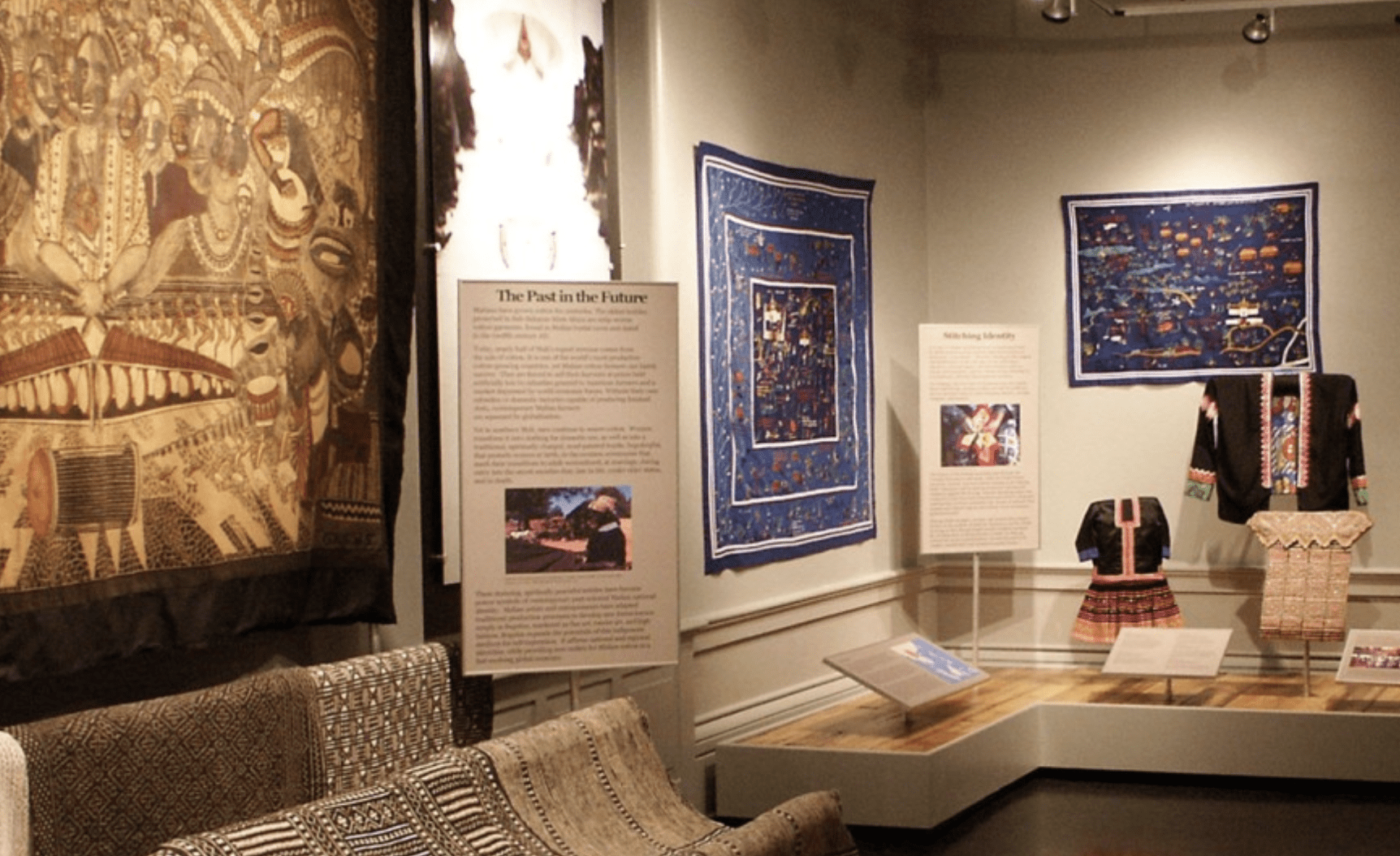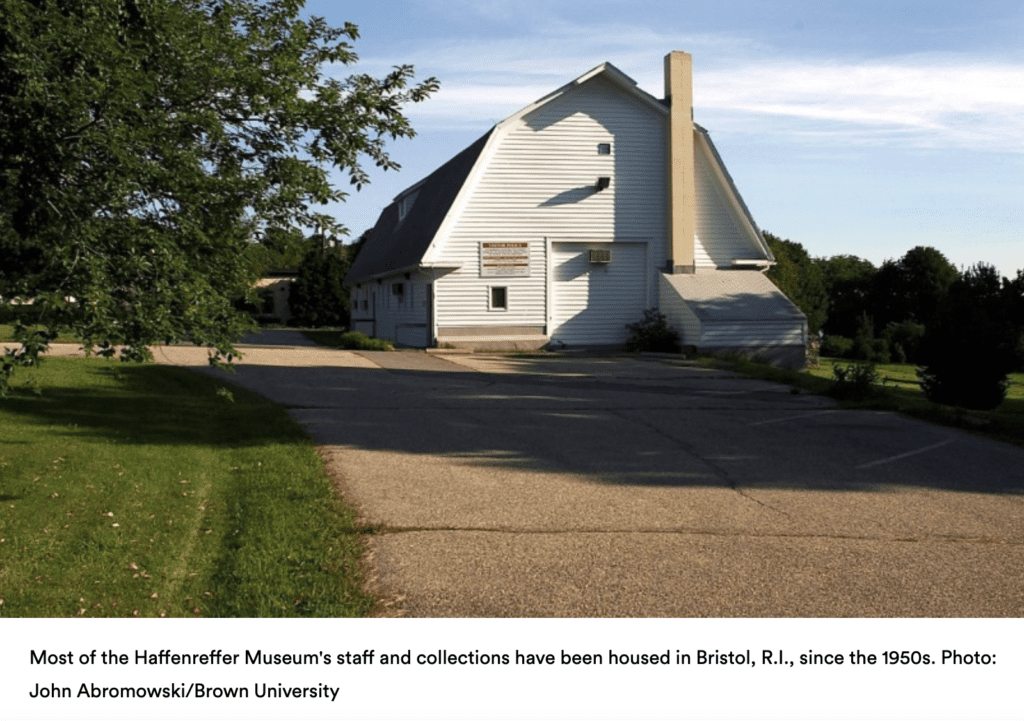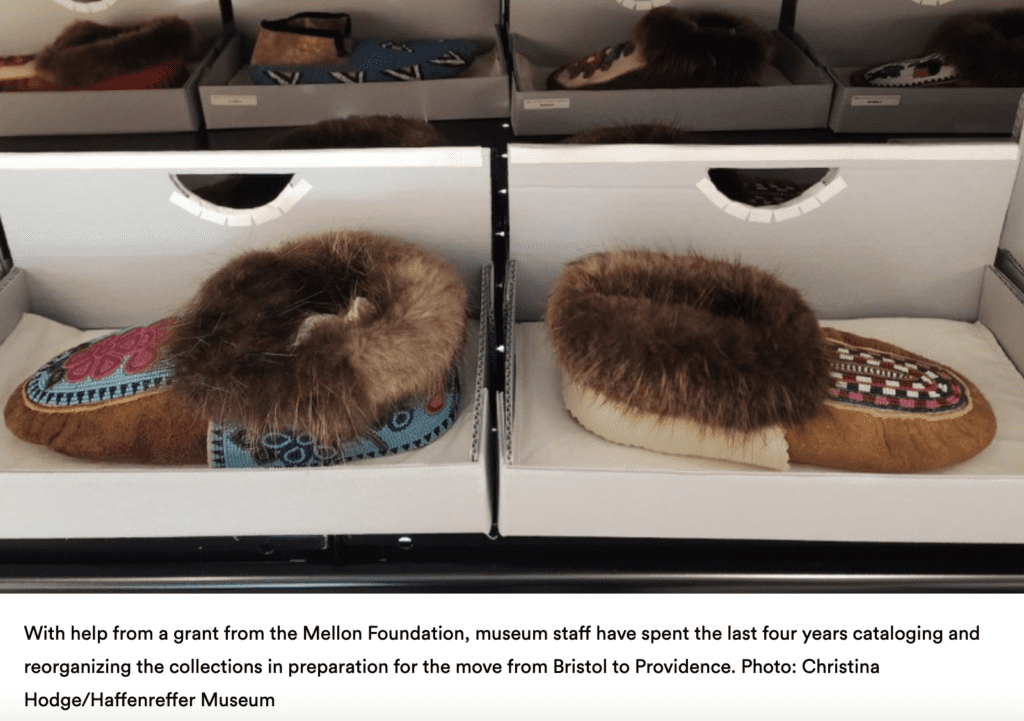Search Posts
Recent Posts
- GriefSpeak: Waiting for Dad – Mari Nardolillo Dias June 13, 2025
- Rhode Island Weather for June 13, 2025 – Jack Donnelly June 13, 2025
- Urgent call by Rhode Island Blood Center for Type O- and B- blood June 13, 2025
- Real Estate in RI: Ready, Set, Own. Pathway to Homeownership workshop June 13, 2025
- Outdoors in RI – Risky cattails, Fight the Bite mosquito report, 2A gun ban bill update June 13, 2025
Categories
Subscribe!
Thanks for subscribing! Please check your email for further instructions.

Brown’s Haffenreffer Museum moving from Bristol to Providence’s Jewelry District
Photos: Brown University
Brown University’s Haffenreffer Museum of Anthropology has long been split across two locations: Providence, where it maintains an exhibition and event space in the heart of the Brown campus; and Bristol, R.I., where most of its collections and staff are housed.
For scholars and community members looking to access the museum’s nearly 1 million ethnographic objects, archaeological specimens and images representing human cultures and societies across the globe, those 17 miles can present less than ideal access.
Soon, however, that challenge will be a relic of the past. In Fall 2025, the museum will move its collections and staff from Bristol to a newly renovated location at 1 Davol Square in Providence’s Jewelry District.
Robert Preucel, director of the Haffenreffer Museum and a professor of anthropology at Brown, said the move will open up a host of new possibilities for scholarship, community outreach and partnership with Indigenous communities worldwide.
“Moving the collections from Bristol to Providence will greatly enhance their use, not only by faculty, staff and students, but also by community partners,” Preucel said.
Museum staff are hard at work preparing for the move. With help from a grant from the Mellon Foundation, they’ve spent the last four years cataloging and reorganizing the collections, ensuring a smooth future transition. They’ve also begun crucial conservation work on fragile objects with a grant from the GRoW @ Annenberg initiative. And this fall, they began collaborating with KITE Architects to design a new space that’s functional and accessible to scholars and the broader community.
Renovations to 1 Davol Square, which Brown has owned since 2007, are set to begin in Fall 2024. Preucel and his colleagues aim to create a site that features spaces for teaching, research, exhibitions and community engagement, fulfilling the Haffenreffer Museum’s mission to connect the University and Providence communities to the world’s cultural creativity.
“The Haffenreffer Museum has a remarkable collection that deserves to be seen and studied widely, and we’re confident that moving to Providence will enable that,” Preucel said. “With direct access to Rhode Island’s biggest, most diverse and most culturally vibrant community, the museum will have the opportunity to not just share its collections and knowledge with more people, but to also welcome descendant communities from around the world who can share their knowledge on their own terms. With this move, we hope to demonstrate that we are not just educators; we are also students.”
From Bristol to Brown


The Haffenreffer Museum’s Bristol roots date back to the turn of the 20th century. In 1903, Rudolf F. Haffenreffer Jr. — a brewer, entrepreneur and philanthropist — purchased a seaside amusement park there for use as a summer home and farm. Haffenreffer was deeply interested in Native American archaeology and history, and over the course of several decades, he bought extensive collections of Indigenous artifacts from New England and the American Southwest. In 1928, he opened a museum on the property, where members of the public could view his collections, and hired LeRoy Perry, a Pocasset Wampanoag sachem, to serve as an interpreter.
After Haffenreffer died in 1954, his heirs donated the museum to Brown, paving the way for anthropology studies at Brown and expanding academic research on Native American history and culture.
Over time, the collection grew to include objects and art spanning several millennia and six continents. Among the items in the collection today are paleolithic hand axes recovered in France; Kiowa and Cheyenne cradleboards; Huni Kuin featherwork from Peru; and 1980s Chilean protest art created in response to Augusto Pinochet’s regime. The museum is also home to the Laboratory for Circumpolar Studies, which holds 850,000 objects documenting the cultural history of the Iñupiat, a group of Native Alaskans.
For several decades, Preucel said, the museum in Bristol remained open to the public and buzzed with activity year-round. Classes of local students took field trips to the site to engage with the collections and learn more about regional Indigenous history. Indigenous tribes across Southern New England visited regularly. And students and faculty at Brown frequently used objects in the collections to study the cultures and histories of Indigenous communities across the globe.
Professor of Anthropology Patricia Rubertone has spent considerable time with the collections, noting that they have strengthened her scholarly research on colonial encounters between Indigenous peoples and Europeans. They’ve also enriched her courses on material culture and the archaeology of settler colonialism, giving students the opportunity to interact with pre-colonial objects from Indigenous tribes in Southern New England, glass beads that European colonists traded with the Narragansett and other Indigenous peoples in the 17th century, and more.
“Working with and learning from physical objects is such an important way to hone critical thinking skills,” Rubertone said. “I’ve always been so grateful to have this extensive collection available, because it brings to life the history and culture I’m teaching in the classroom. It encourages my students to think deeper about how these things were made, how they ended up in a museum, and what that means about the historical relationship between Indigenous people and European settler colonialists.”
In 2008, the museum had to close to the public — and to Brown classes like Rubertone’s — after state fire code regulations changed. The museum moved its exhibitions and public programs to a small first-floor space in Manning Hall on the College Green, retaining the Bristol site as an office and collection storage space. While the museum has a Culture Lab in Manning Hall where it welcomes scholars and community members, its small size has restricted the size and frequency with which visitors can engage with the collections.
“For most of the Haffenreffer Museum’s history, it was very invested in educational and community outreach,” said Christina Hodge, associate director of the museum. “The Bristol community was in the past really heavily served by the museum — but the museum isn’t able to serve it anymore, and on top of that, being in Bristol has presented a challenge for serving other stakeholder communities, including our own faculty and students.”
The two buildings that house the collections are more than 80 years old. Climate control, inadequate storage space, and the frequent movement of historical artifacts between Bristol and Providence have presented challenges, Hodge said.
“Moving to Providence won’t just put us in a multicultural center and a transit hub where we are more visible and more accessible to folks,” Hodge said. “It will also make our everyday museum work easier. We’re getting to reorganize objects and staff in a way that takes better care of the collections, organizes things in more rational ways and allows staff to serve the community more effectively.”
Rethinking the museum

Moving to Providence, Hodge noted, created an opportunity to take full stock of the collections.
“When you start to move your household from Point A to Point B, you’re given an opportunity to take inventory of what you have,” Hodge said. “We are using this move as an opportunity to photograph, catalogue and safely pack up every item in our collection so that it will be more accessible to scholars and community members and easier for us to organize and find in the future. More than that, we’re using it as a chance to evaluate everything we have and assess whether it is serving our mission today.”
There are some items in the collections, Hodge said, that no longer make sense for the museum to keep, and staff are taking steps to leave them in better hands. For example, the museum’s head curator is working with PVD World Music, an African-centered musical collective, to transfer a collection of traditional instruments that were donated to the museum but were never used because they duplicate other holdings. The organization’s members, she noted, have specific cultural knowledge about the instruments and plan to use them in education and outreach programs.
Over the longer term, the move will give the museum another way to take stock in its collections: By inviting the city’s diverse diaspora communities to visit and weigh in. Initially, the museum will retain its exhibition space in Manning Hall and there will not be designated public space on its move-in to 1 Davol Square’s second and third floors. But pending additional fundraising, museum leaders aim to eventually expand their physical footprint to the first floor to enable more collaboration with communities who have cultural ties to the collections.
“We have collections of items from communities across the world, and a lot of it is very relevant to the many diaspora communities here in Providence,” including those with Caribbean, African and Asian ancestry, Hodge said. “We’re not just enthusiastic about sharing the collections with them — we’re also eager to hear stories that will widen our understanding of the cultural significance of these items.”
Rubertone agreed that collaborating more effectively with Indigenous and descendant communities is a key responsibility for museums today, and that moving to Providence could help the Haffenreffer Museum expand those partnerships: “Having the museum closer to campus puts it in a place where so many different cultures meet up, interact and agree and disagree in productive ways,” Rubertone said.
Preucel said rethinking the role of anthropological museums is at the heart of his vision for the Haffenreffer Museum’s future. While the museum has long partnered with Native communities — collaborating with them to organize educational crafting workshops and talks on sustainable land use, for example — its aim is to grow existing local relationships and form new ones with descendant communities farther afield.
“Museums are assuming a more socially engaged role, and that means they’re taking responsibility for reaching out to the communities who produced these objects in the first place,” Preucel said. “Sometimes, that outreach might result in returning items, duplicating them or developing programs to share them more widely. Regardless, the goal is to learn from these communities, to learn how to meet their needs and educate a broader public in the process.”
